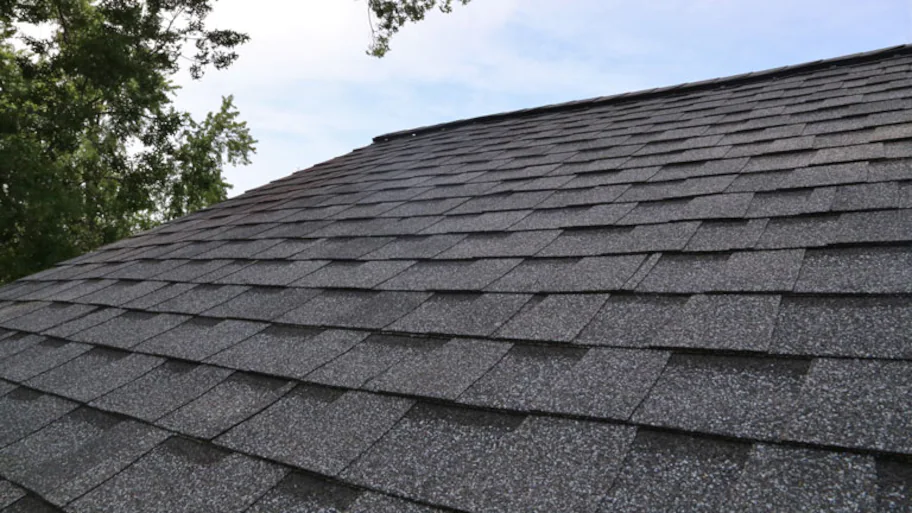Individual Testimonies on the most effective Gainesville FL Roofing Companies Readily Available
Individual Testimonies on the most effective Gainesville FL Roofing Companies Readily Available
Blog Article
Ideal Practices for Ensuring Appropriate Roof Air Flow
Making certain correct roof covering ventilation is crucial for the longevity and performance of a roof system. A balanced intake and exhaust vent proportion, generally 1:300, plays a crucial function, with consumption vents preferably positioned at the lower side of the roofing system for amazing air access and exhaust vents at the top for warm air exit. Normal assessments to recognize obstructions and maintain clear air movement are vital. Furthermore, keeping insulation away from vents is vital to avoid air movement restriction. Recognizing these fundamental components sets the phase for more comprehensive understandings right into installation and upkeep techniques that can significantly improve your roof's efficiency.
Understand Air Flow Basics
Properly recognizing air flow basics is crucial for guaranteeing the durability and effectiveness of roof covering systems. Effective air flow mitigates wetness accumulation and temperature extremes in the attic room, both of which can result in considerable structural damages gradually. A well-ventilated roof covering aids in preventing typical issues such as mold and mildew growth, wood rot, and ice dams, which can compromise the integrity of the roofing materials and the underlying structures.
The key objective of ventilation is to help with the motion of air, permitting a constant exchange between the exterior and indoor atmospheres. This balance is achieved with a combination of intake and exhaust vents that collaborate to keep ideal airflow. Consumption vents, typically situated along the soffits or eaves, enable fresh air to get in the attic room, while exhaust vents, often positioned at or near the roof covering ridge, enable hot, humid air to escape.
Key aspects affecting the effectiveness of roofing system ventilation consist of proper positioning, ample sizing, and guaranteeing that both consumption and exhaust vents are unhampered. Regular assessment and upkeep are critical to determine potential blockages, damages, or ineffectiveness in the ventilation system, therefore guarding the roofing's performance and durability.
Kinds Of Roof Covering Vents
Roof vents play a crucial function in preserving reliable attic air flow and, by expansion, the total health and wellness of the roof system. Numerous kinds of roof vents are readily available, each with distinct advantages tailored to certain roof covering demands. Ridge vents, for instance, are set up along the roof covering's top, enabling cozy, moist air to get away from the attic room. They supply continual ventilation and mix effortlessly with the roofline, making them both efficient and aesthetically pleasing.

Soffit vents are installed under the eaves and operate in tandem with roof vents to guarantee a well balanced intake and exhaust system. By allowing cooler air to get in from below, soffit vents assist in the expulsion of hot air with top vents. Gable vents, located on the outside wall surfaces of the attic room, offer one more effective service, specifically in homes with saddleback roofs.
Evaluate Your Existing Ventilation

Following, take into consideration the age and condition of your roof materials and air flow parts. Older systems may not follow current building regulations or might have degraded over time, reducing their effectiveness. Conduct a comprehensive evaluation to determine any indicators of wear and tear, such as rust, damage, or gaps that could compromise the system's performance.
In visit this page addition, determine the attic temperature level and moisture degrees. High temperatures and moisture can indicate inadequate ventilation.
Installation Best Practices
Effective setup of roof covering air flow systems is extremely important for making sure optimum efficiency and long life. Appropriate installation starts with understanding the certain air flow demands of the structure and the roof it covers. This involves calculating the proper proportion of consumption to tire vents, typically adhering to the 1:300 regulation, which specifies one square foot of air flow for every single 300 square feet of attic flooring area.

The positioning of vents is similarly essential. Intake vents need to be set up at the roofing's lower side, usually in the soffits, to allow awesome air to get in. Exhaust vents, on the other hand, ought to be set up near or at the roof's height to assist in the exit of warm, moist air. This produces a natural airflow that aids keep temperature and wetness balance within the attic room area.
Seal all air vent links meticulously to stop air leakages and possible water infiltration. Usage high-quality materials and adhere to maker guidelines to make certain sturdiness and performance. In addition, incorporating ridge vents with baffles can significantly boost air flow efficiency by preventing wind-driven rain and snow from entering the attic.
Ultimately, exact installation of roof covering ventilation systems mitigates potential problems such as mold growth, ice dams, and architectural damages, making certain the roofing system's integrity and the building's general health and wellness.
Routine Upkeep Tips
Consistency in upkeep methods is basic to ensuring the long-lasting performance of roofing air flow systems. Normal evaluations are essential, ideally executed biannually-- in the springtime and loss. Throughout these inspections, guarantee that vents are devoid of debris, nests, and other obstructions that could hinder air movement. Check for any signs of moisture accumulation or mold and mildew, as these can suggest inappropriate air flow or leaks (roofing companies gainesville florida).
Make use of a soft brush or a vacuum cleaner to get rid of dirt and particles from consumption and exhaust vents. Be cautious not to harm the vent displays or louvers throughout the procedure.
Appropriate insulation is similarly important. Guarantee that attic room insulation does not obstruct the vents, as this can seriously restrict airflow. If any insulation has shifted or resolved, reposition or replace it to preserve a reliable obstacle.
Lastly, replace any type of damaged or this contact form missing parts quickly. Broken vents, fractured shingles, or worn-out blinking can all contribute to poor ventilation and needs to be attended to without delay. Routine upkeep ensures that the roof covering air flow system works optimally, therefore prolonging the life expectancy of the roof itself.
Conclusion
Guaranteeing correct roof covering air flow is extremely important for maintaining the effectiveness and resilience of a roof. Adherence to the 1:300 intake and exhaust air vent proportion, paired with the critical placement of vents, is essential. Routine biannual inspections, particles cleaning, and making sure insulation does not obstruct air flow are vital practices. Implementing these ideal practices will cultivate a well-ventilated roofing system, consequently alleviating potential problems connected to moisture accumulation and excessive heat, ultimately lengthening the roof's life expectancy.
A balanced consumption and exhaust air vent proportion, typically 1:300, plays a critical role, with intake vents ideally placed at the reduced edge of the roofing system for awesome air entry and exhaust vents at the peak for warm air exit. Consumption vents, commonly located along the eaves or soffits, allow fresh air to enter the attic space, while exhaust vents, often positioned see post at or near the roof covering ridge, make it possible for warm, damp air to get away.
Soffit vents are installed under the eaves and job in tandem with roof covering vents to guarantee a well balanced intake and exhaust system. By allowing cooler air to get in from below, soffit vents promote the expulsion of warm air through upper vents. Adherence to the 1:300 consumption and exhaust vent proportion, combined with the calculated placement of vents, is necessary.
Report this page